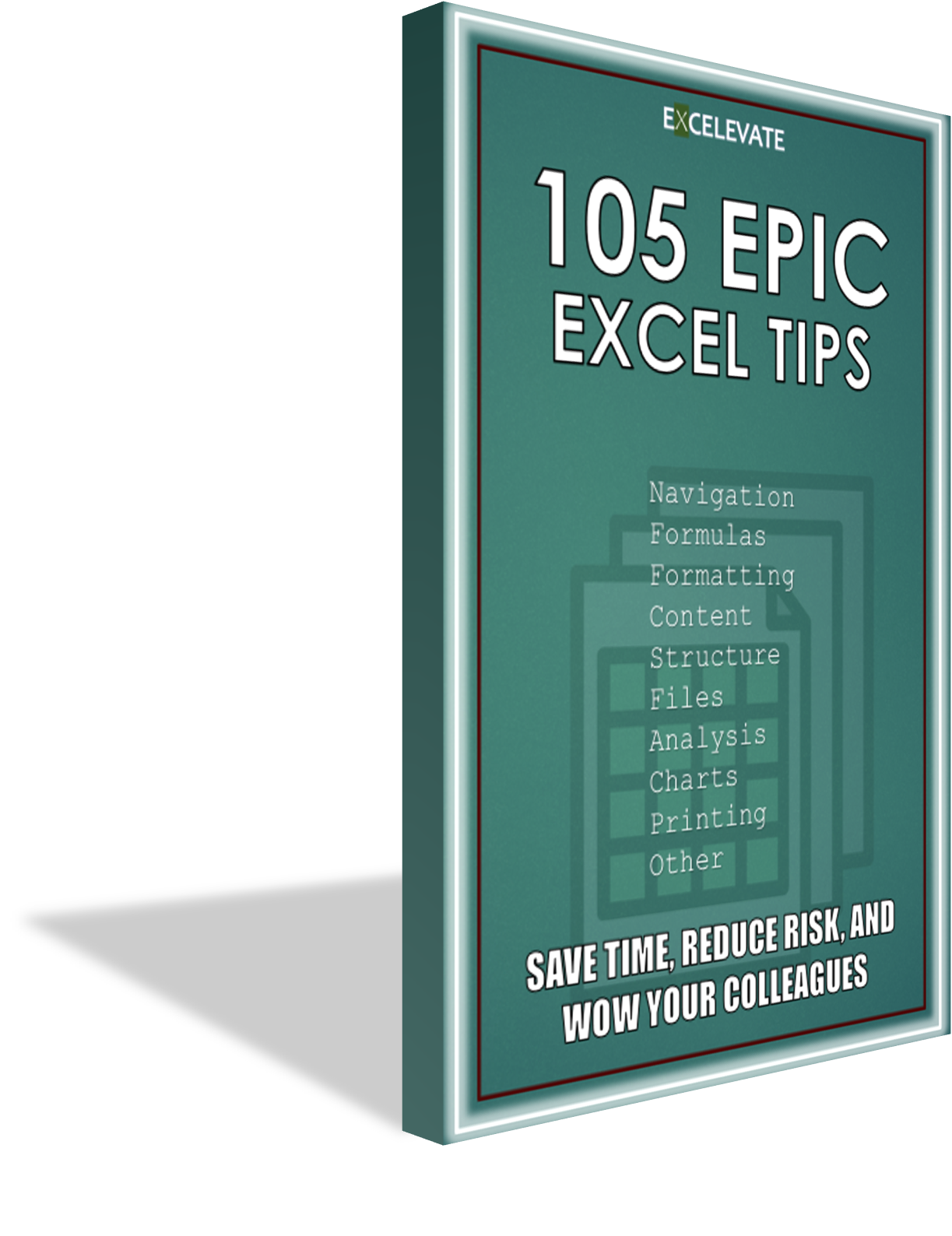 Overview
Overview
Having spent the first five years of my career as and auditor, I can attest to how much time auditors spend in Excel. And when you spend 90% of your time in Excel, it’s critical to work as efficiently as you can and find the errors that might be lurking all throughout your workbooks. I prided myself on working with efficiency and quality, and I used several custom Excel tools to help me do it.
In this article, we’ll walk through ten of the tools I’ve used throughout my career both as an auditor and as I babysat supported them on the client side. All of these tools (and a whole bunch more!) are available in the XLEV8 Excel Add-in. Make sure to grab a copy of the example workbook that accompanies this article using the box below!
 The ten custom tools
The ten custom tools
1. Instant workpaper cross-reference links
2. Automated cross-reference formatting
3. Tickmark shortcuts
Tickmarks are a crucial part of the audit process. They efficiently indicate the documentation and review work done by the audit team. The accounting firm I worked for had some custom buttons in the Excel toolbar, which were nice, but it took several clicks to insert them. In the video screenshot, notice how you can define your own tickmarks (text, symbols, images, and formatting) and insert them without using the mouse!
4. Hyperlinked table of contents
When I was an auditor, the files we received usually had a LOT of sheets (like 20+). Much of it was unnecessary years of history, but whatever the reason – it took a lot of time and effort to navigate. I use a tool that instantly adds a hyperlinked Table of Contents, which made navigation so much easier. Over the years, I’ve built several other sheet-related tools that help with navigation and sheet management, all without having to use the mouse! Take a look at the TOC output in the screenshot below.

5. Instant hidden sheet/cell list
You’d be amazed how many things clients would put in hidden sheets, columns, and rows. Most of the time they were hidden to reduce the clutter, but sometimes it was stuff you probably wouldn’t want the auditors seeing . And if you leave that stuff hidden and a reviewer finds it? That’s a great way to get your hand slapped!
To instantly find all the hidden columns and rows in a file, I use a tool that will list them all out to quickly review them. You can then use that list to easily toggle them between hidden and visible!
The trick with hidden cells and sheets is that once you unhide them, it’s difficult (if not impossible) to hide them again, unless you’re keeping track of them. But this tool does that for you, making it a breeze to toggle them! Check it out in the screenshot video below.
6. Highlight hard-coded cells

7. Centralized comments

8. Formula reference shortcuts
Formulas can be tricky to trace and audit. The more cell references, the more time it takes to navigate and review them. If you haven’t used it yet, the Ctrl+[ shortcut is super-helpful for jumping to a formula cell reference, but it only works with the first reference in the formula.
To help understand which cell ranges are referenced in a formula and jump back and forth between them, I use a helpful search box that shows them all – the cell range, the sheet, and the file. Check out the search box in action in the screenshot below.

9. Find any Excel file in seconds
We all work with a lot of Excel files, and we spend an surprisingly large amount of time searching for them. It’s easy to forget where we save files and even what we name them.
To minimize that time, I use a file search box that shows results as you type (much like Google). I can usually find and open a file within just a couple of seconds this way, and that time adds up really fast! Before I started taking this approach, I remember searching for so long that I ended up just recreating the file a couple times, and nobody needs that! Check out the search box in action in the screenshot below.

10. Instant formula error list

 Video
Video
 Summary
Summary
When you live in Excel as much as auditors (and most accountants really), every little Excel tip and trick can add up really fast for saving time, reducing errors, and saving your sanity. These are just a few of the ones I’ve used and shared over the years. Documentation, navigation, and finding potential errors are a great way to make Excel much more powerful. Being the local Excel expert doesn’t hurt either 😉!
If you’re an auditor, you’ve been one, or you’ve worked with them, what Excel tips and tricks have you used? Let us know in the comments below!




Recent Comments